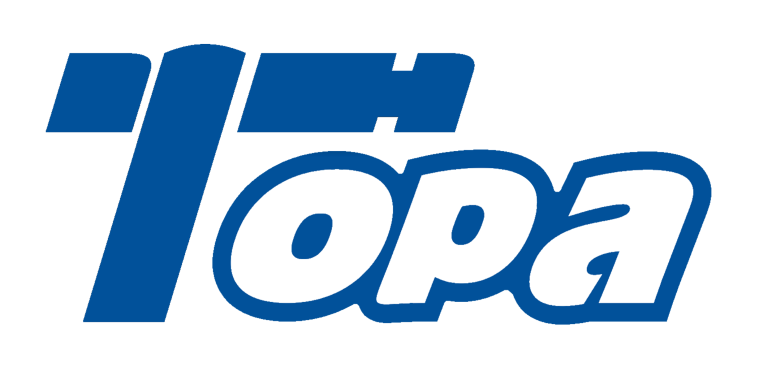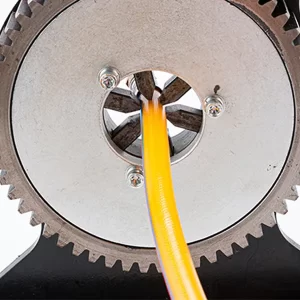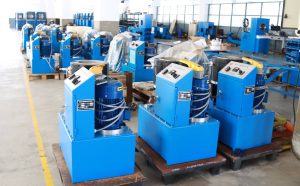Industrial hydraulic hose crimpers play a crucial role in ensuring secure and leak-proof connections in hydraulic systems. What defines a reliable industrial hydraulic hose crimper? This article explores the key factors, components, and features that make these machines trustworthy in demanding industrial settings. You’ll gain insight into performance aspects, safety considerations, and maintenance requirements that impact reliability. Here’s the deal: understanding these elements helps businesses choose the right equipment, avoid costly downtime, and maintain operational efficiency. This deep dive into hydraulic hose crimpers aims to equip you with the knowledge needed to assess and select crimpers that stand the test of time.
1 What is an Industrial Hydraulic Hose Crimper?
An industrial hydraulic hose crimper is a specialized machine designed to join hydraulic hoses with fittings securely, ensuring a leak-free, durable seal essential for hydraulic system performance. Ready for the good part? These machines are indispensable in industries such as construction, agriculture, manufacturing, and mining where hydraulic systems operate under high pressure. There are various types of hose crimpers including manual, semi-automatic, and fully automatic models. Manual crimpers require physical effort and skill, suitable for low volume work. Semi-automatic crimpers balance automation and manual control, often used in medium-scale operations. Fully automatic crimpers excel in high-volume production, offering precision and speed.
Crimpers work by compressing a fitting sleeve around the hose end using hydraulic pressure, creating a robust bond that withstands pressure and vibration. Quality crimping ensures no leakage, maintaining system integrity. The machine’s design varies to accommodate different hose sizes and fitting types, from small diameter hoses to large industrial lines. But here’s the kicker: selecting the correct crimper depends on your production needs, hose specifications, and the operating environment. Using an inappropriate crimper can result in poor crimps, hose damage, and ultimately system failure.
Table 1: Types of Industrial Hydraulic Hose Crimpers
| Type | Operation Mode | Typical Use Case | Pros | Cons |
|---|---|---|---|---|
| Manual | Hand operated | Small volume, simple jobs | Low cost, portable | Labor-intensive, inconsistent |
| Semi-Automatic | Hydraulic assist | Medium volume, workshops | Balanced control and automation | Requires operator skill |
| Fully Automatic | Computer controlled | Large volume production lines | High precision, fast | Higher cost, complex setup |
2 Why Does Reliability Matter in Hydraulic Hose Crimpers?
Reliability in hydraulic hose crimpers directly impacts production efficiency, safety, and overall cost management. What’s the real story? Unreliable crimpers cause inconsistent crimps, leading to leaks and system failures which may halt entire operations. In industries relying heavily on hydraulics, downtime can be expensive, sometimes resulting in thousands of dollars lost per hour. Moreover, faulty crimps increase safety risks, as leaking hydraulic fluid can cause accidents or environmental damage.
Consistent, reliable crimping ensures every hose assembly meets safety and performance standards. This reliability extends equipment lifespan and reduces the frequency of repairs. Businesses that invest in dependable crimpers experience fewer interruptions and better quality control. Another aspect to consider is regulatory compliance; many sectors require adherence to strict standards which demand reliable hose assemblies.
This is where it gets interesting… Reliability also plays a role in workforce morale and customer trust. When workers trust their tools, they operate more efficiently. Similarly, end customers depend on suppliers who deliver high-quality, durable products. Investing in a reliable crimper helps maintain a competitive edge and enhances brand reputation.
Table 2: Impacts of Crimper Reliability on Business
| Impact Area | Description | Consequence of Unreliability |
|---|---|---|
| Production Efficiency | Steady output with fewer errors | Downtime, inconsistent product quality |
| Safety | Prevents leaks and accidents | Workplace hazards, regulatory fines |
| Cost Management | Lower maintenance and repair costs | High repair bills and lost contracts |
| Compliance | Meets industry standards | Legal liabilities and penalties |
| Reputation | Builds client and worker trust | Loss of customers and skilled workers |
3 What Are the Key Components of a Hydraulic Hose Crimper?
Understanding the essential components of hydraulic hose crimpers helps evaluate their reliability and performance. The main parts include the crimping head and dies, hydraulic system, and control panel. But here’s the kicker: each component must be engineered for durability and precision to ensure consistent crimp quality.
The crimping head holds the dies that compress the hose fitting. Dies come in various sizes and shapes to match hose and fitting specifications. Precision-machined dies provide uniform compression pressure, preventing hose damage or leaks. The hydraulic system powers the compression force. High-quality hydraulic pumps and valves maintain steady pressure and flow. Any weakness here causes irregular crimps and equipment failure.
The control panel enables operators to set parameters such as pressure, crimping time, and die size. Modern crimpers often feature digital controls and programmable settings for repeatability. Ergonomic interfaces improve ease of use and reduce operator error. Some advanced models include sensors and feedback systems to monitor crimp quality in real-time.
Ready for the good part? Well-designed integration of these components defines crimper reliability. Inferior parts or poor assembly lead to frequent breakdowns and poor hose assemblies, jeopardizing entire hydraulic systems.
Table 3: Key Components and Their Roles
| Component | Function | Reliability Factor |
|---|---|---|
| Crimping Head & Dies | Compresses fittings to hose ends | Precision and material quality |
| Hydraulic System | Provides crimping force | Pressure consistency and durability |
| Control Panel | Operator interface and settings | Ease of use and control accuracy |
| Sensors/Feedback | Monitors crimp quality | Real-time detection of issues |
4 How Does Hydraulic Pressure Affect Crimper Performance?
Hydraulic pressure plays a vital role in crimper performance and reliability. Crimping requires precise pressure application to achieve tight, leak-proof fittings. What’s the real story? Too little pressure results in weak crimps, while too much pressure risks hose or fitting damage. Maintaining the correct pressure range is crucial.
Consistency matters most. Fluctuations in hydraulic pressure cause uneven crimps and increase failure rates. Reliable crimpers use high-quality pumps and valves designed to keep pressure steady under varying workloads. Pressure gauges and digital sensors provide feedback to ensure accuracy.
Overpressure risks include deformation of fittings and compromised hose integrity. These issues reduce the service life of hose assemblies and can lead to sudden failures under operational stress. Conversely, insufficient pressure may create microscopic gaps allowing fluid leaks.
This is where it gets interesting… Some advanced crimpers offer adjustable pressure settings for different hose materials and sizes. This adaptability enhances reliability by matching pressure to specific application needs. Operators benefit from clear guidelines and automated controls that prevent pressure misuse.
Table 4: Hydraulic Pressure Effects on Crimping
| Pressure Condition | Impact on Crimp Quality | Reliability Outcome |
|---|---|---|
| Too Low | Loose crimps, leaks | Reduced hose assembly lifespan |
| Optimal Range | Tight, uniform crimps | High durability and safety |
| Too High | Hose damage, fitting deformation | Increased failure risk |
| Pressure Fluctuations | Uneven crimps, inconsistent quality | Frequent repairs and downtime |
5 What Role Does Build Quality Play in Reliability?
Build quality directly affects the reliability and lifespan of hydraulic hose crimpers. Sturdy materials, precise manufacturing, and strict quality control protocols produce machines that withstand harsh industrial conditions. Here’s the deal: poor build quality often leads to frequent repairs and inconsistent crimp results.
Frames constructed from high-strength steel resist deformation during operation. Components like hydraulic cylinders and pumps must use durable alloys resistant to wear and corrosion. Weld joints and fasteners require robust design to endure vibrations and heavy use.
Quality control ensures each crimper meets specifications. Some manufacturers provide certifications and testing reports guaranteeing performance standards. This transparency builds trust with buyers and reduces risk.
Ready for the good part? Investing in crimpers with verified build quality means lower total cost of ownership. Fewer breakdowns reduce downtime and repair expenses. Moreover, consistent crimping maintains product reputation and customer satisfaction.
Table 5: Build Quality Factors Influencing Reliability
| Build Element | Quality Attribute | Reliability Benefit |
|---|---|---|
| Frame | High-strength steel or alloy | Resistance to deformation and wear |
| Hydraulic Components | Corrosion-resistant materials | Long-lasting and leak-free operation |
| Welds & Fasteners | Precision welding and securing | Vibration resistance and durability |
| Quality Control | Testing and certification | Assurance of consistent performance |
6 How Important is Maintenance for Hydraulic Hose Crimpers?
Maintenance is vital for keeping hydraulic hose crimpers reliable and safe. Without proper care, wear accumulates leading to leaks, pressure drops, and eventual breakdowns. But here’s the kicker: regular maintenance extends machine life and prevents costly downtime.
Routine tasks include inspecting hydraulic lines for leaks, checking and replacing worn dies, lubricating moving parts, and calibrating pressure sensors. Operators should record maintenance activities to track issues and schedules.
Signs of wear include unusual noises, inconsistent crimps, and sluggish hydraulic response. Addressing these early prevents larger failures. Neglecting maintenance risks sudden machine stoppages and compromised hose quality.
Manufacturers often provide recommended maintenance intervals and checklists. Adhering to these guidelines keeps crimpers in peak condition. Training operators on maintenance basics also improves machine reliability.
This is where it gets interesting… Some crimpers feature automated diagnostics alerting users when service is needed. Such innovations simplify upkeep and reduce human error, further boosting reliability.
7 What Features Enhance User Safety in Hydraulic Hose Crimpers?
User safety is a critical aspect of crimper reliability. Machines incorporating effective safety features protect operators and comply with industry regulations. Here’s the deal: ignoring safety leads to accidents, legal penalties, and reputational damage.
Common safety elements include guards around moving parts, emergency stop buttons, and pressure relief valves. Guards prevent accidental contact with the crimping head during operation. Emergency stops allow quick shutdown in case of hazards.
Pressure relief valves protect against hydraulic system overpressure, preventing equipment failure or injury. Clear warning labels and operator manuals reinforce safe use practices.
Training is equally important. Well-trained operators understand risks and use machines properly. Manufacturers may require certifications or provide safety training programs.
Ready for the good part? Safety features improve reliability by reducing human error and equipment misuse. A safe work environment enhances productivity and morale.
8 How Does Automation Influence Reliability?
Automation transforms hydraulic hose crimping by improving precision and reducing manual errors. Fully automatic crimpers control pressure, timing, and die movement with programmed settings. What’s the real story? This leads to consistent, high-quality crimps with minimal operator intervention.
Manual crimpers depend on user skill and can produce variable results. Automation standardizes the process, lowering defect rates and speeding production. It also reduces operator fatigue, a common cause of mistakes.
Some automated crimpers include data logging and quality control feedback. These features help track performance trends and identify issues proactively.
This is where it gets interesting… Automated machines require less training and improve throughput in large-scale manufacturing. However, initial costs are higher and maintenance may be more complex.
9 What Role Does Manufacturer Support Play?
Manufacturer support affects reliability beyond the machine itself. Responsive service, availability of spare parts, and warranty coverage keep crimpers operational longer. Here’s the deal: poor support leads to extended downtime and lost revenue.
Good manufacturers offer technical assistance via phone or on-site visits. Access to genuine replacement parts avoids compatibility problems and maintains crimp quality.
Warranties provide peace of mind, covering defects and repairs for a defined period. Some vendors offer extended service contracts.
Ready for the good part? Choosing suppliers with solid support infrastructure enhances machine uptime and total value.
10 How Do OEM and Customization Options Impact Reliability?
OEM and customization allow tailoring crimpers to specific operational needs. Custom die sets, pressure settings, or automation features optimize performance for unique hose types. What’s the real story? Customized crimpers fit better with existing workflows, reducing errors.
Customization must maintain quality standards to ensure reliability. Working with experienced manufacturers ensures designs meet durability and safety criteria.
This is where it gets interesting… OEM options expand crimper capabilities without sacrificing dependability, offering competitive advantages for specialized applications.
11 What Are the Common Issues Affecting Crimper Reliability?
Common problems that reduce crimper reliability include hydraulic leaks, inconsistent crimps, and electrical failures. Hydraulic leaks reduce pressure and crimp force, causing weak joints. Wear in seals and hoses often causes these leaks.
Inconsistent crimps arise from worn dies, incorrect pressure, or operator error. This compromises hose integrity and can cause failures under pressure.
Electrical failures affect control panels and sensors, leading to erratic operation or shutdowns. Exposure to dust, moisture, or vibration contributes to these issues.
But here’s the kicker: proactive inspection and maintenance minimize these problems and improve uptime.
12 How Can You Test the Reliability of a Hydraulic Hose Crimper?
Testing crimper reliability involves performance and quality checks. Sample crimps undergo dimensional inspection to verify correct compression. Pressure tests simulate operational conditions to ensure seals hold.
Certification to industry standards like SAE or ISO validates reliability claims. These tests require specialized equipment and expertise.
Monitoring production quality over time reveals trends and early warning signs. Data logging supports preventive maintenance planning.
Ready for the good part? Rigorous testing protects against costly failures and ensures compliance with client specifications.
13 What Are the Cost Considerations When Choosing a Reliable Crimper?
Cost includes purchase price, maintenance, repairs, and downtime losses. Cheaper crimpers may have lower initial costs but higher failure rates and repair expenses.
Investing in quality machines often yields long-term savings through reduced breakdowns and higher productivity. Factoring total cost of ownership is essential.
This is where it gets interesting… Budgeting for preventive maintenance and spare parts is part of smart purchasing decisions.
14 How Do Environmental Conditions Affect Crimper Reliability?
Environmental factors like temperature, dust, and humidity impact crimper lifespan. High temperatures may degrade seals and hydraulic fluids. Dust infiltration clogs components and sensors.
Moisture can cause corrosion and electrical shorts. Protective enclosures and filtration systems mitigate these risks.
But here’s the kicker: choosing equipment rated for your environment prevents premature failures and costly repairs.
15 What Are the Best Practices for Extending the Life of Your Hydraulic Hose Crimper?
Extending crimper life involves proper use, regular maintenance, and operator training. Avoid overloading machines or using incorrect dies. Follow manufacturer guidelines strictly.
Routine inspections catch problems early. Well-trained operators handle machines carefully and recognize warning signs.
Ready for the good part? Establishing preventive maintenance schedules and documenting work builds a culture of reliability and safety.
Conclusion
What defines a reliable industrial hydraulic hose crimper combines precision engineering, consistent hydraulic pressure, durable build quality, and strong manufacturer support. Safety features and automation further enhance dependable operation. Proper maintenance and environment considerations sustain machine performance over time. Here’s the deal: investing in reliable crimpers reduces downtime, safeguards safety, and improves overall productivity. Choosing wisely means protecting your business’s reputation and bottom line. Take the time now to select equipment matching your specific needs and operating conditions. For more detailed advice or customized solutions, reach out to trusted manufacturers who prioritize quality and service.
FAQ
Q1: What is an industrial hydraulic hose crimper?
An industrial hydraulic hose crimper securely joins hydraulic hoses and fittings using hydraulic pressure to create leak-proof, durable connections essential for hydraulic systems.
Q2: How does a hydraulic hose crimper work?
It applies hydraulic pressure to compress a fitting sleeve around a hose end, forming a tight seal that withstands high operational pressures without leaks.
Q3: What factors affect the reliability of a hydraulic hose crimper?
Reliability depends on build quality, consistent hydraulic pressure, maintenance practices, safety features, and manufacturer support.
Q4: How often should hydraulic hose crimpers be maintained?
Regular maintenance should follow manufacturer recommendations, typically involving inspections, lubrication, and parts replacement every few months to avoid breakdowns.
Q5: Can hydraulic hose crimpers be customized for specific applications?
Yes, many manufacturers offer OEM and customization options to adapt crimpers for unique hose sizes, materials, or production needs while maintaining reliability.




